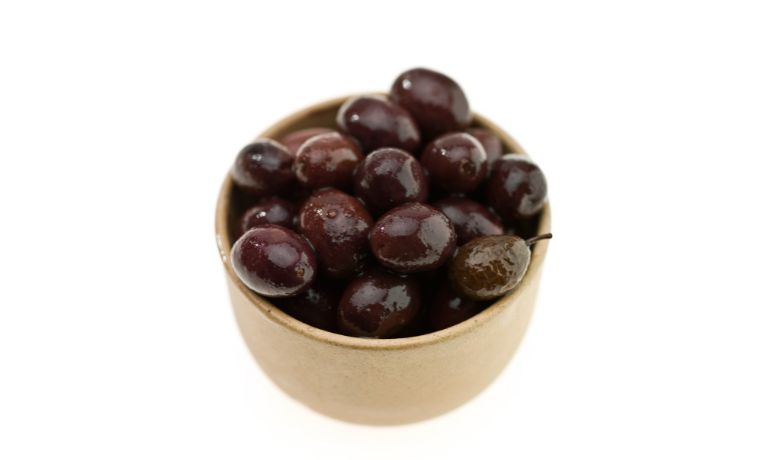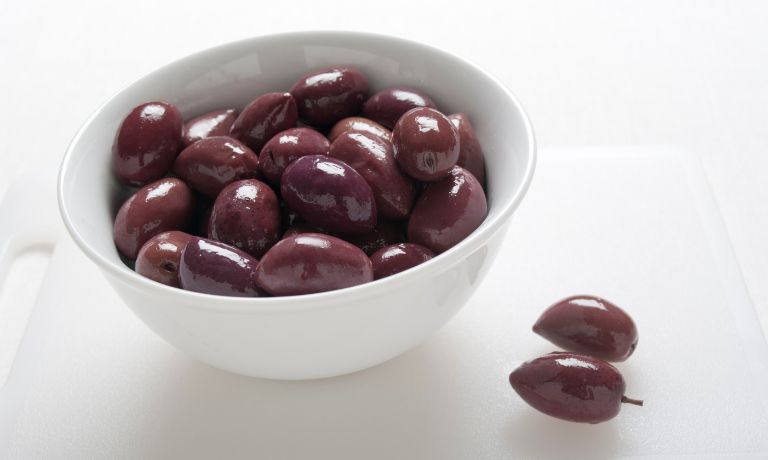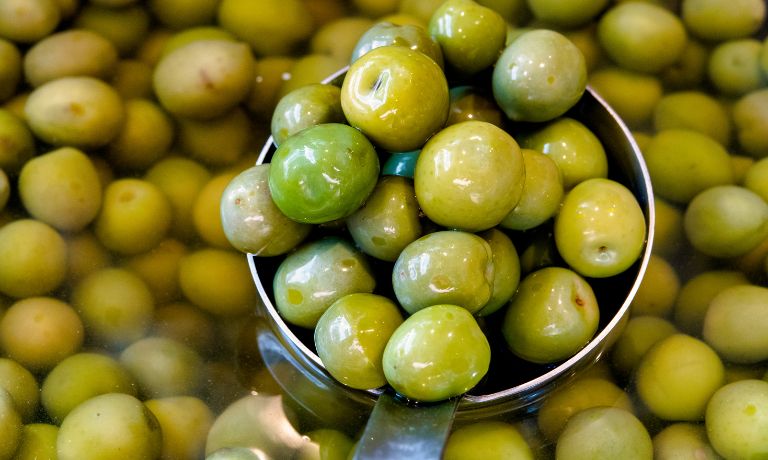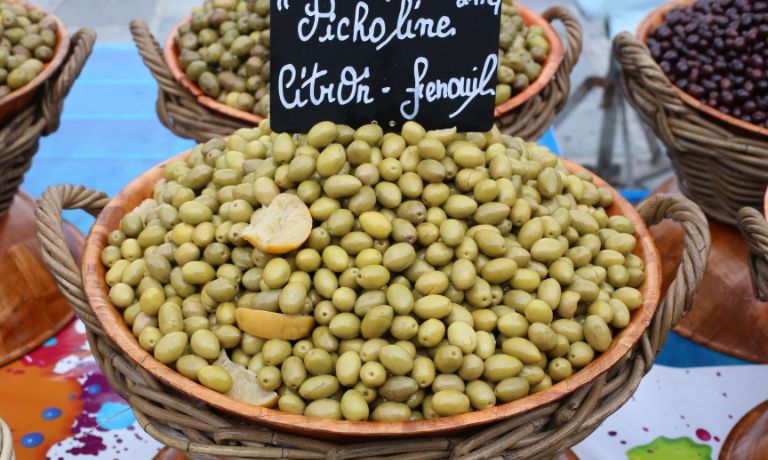Do you love the salty and savory flavor of Nicoise olives but want something different?
Look no further if you’re looking for a unique substitute for Nicoise olives!
In this blog post, we’ll detail some of the best alternatives to Nicoise Olives but still, bring out their distinct flavor profile in your recipes.
We’ll discuss how each one works, plus tips on how to use them instead of Nicoise Olives!
What Are Nicoise Olives?
Nicoise olives are small, dark-brown olives originating from Southern France.
The name ‘Nicoise’ comes from the region around Nice, where this variety is mainly grown and harvested.
Nicoise olives have a sweet and mild flavor with a hint of bitterness. They are usually sold packed in brine and occasionally in oil.
Nicoise olives are usually used as a garnish for salads or other dishes, but they can also be used in cooking to add flavor to sauces, stews and casseroles.
They are an especially good choice when making tapenade – a spread made from puréed olives, capers and anchovies – as they add a sweet and nutty flavor.
Nicoise olives are also used to make olive oil, an essential ingredient in Mediterranean cooking.
They can be added to pizzas or cooked with pasta dishes for a unique twist on flavor.

Substitutes For Nicoise Olives
But if you don’t have any or can’t find Nicoise olives in your local stores, there are several alternative options:
Kalamata Olives
Kalamata olives are a type of olive grown in the Kalamata region of Greece.
They have a deep, purple-black color with a rich, nutty flavor and meaty texture.
A popular ingredient for Mediterranean dishes, they can be used or eaten as tapenade or salad topping.
They have more depth and complexity of flavor than the milder flavor of Nicoise olives, so they can add an extra layer of richness to your dishes.
Their meaty texture makes them a great addition to salads, pasta dishes, and rice dishes.
They are also a great source of protein and healthy fats, making them a nutritious addition to your meals.

Green Olives
Green olives are a type of olive picked before it has fully ripened. This results in a more bitter, tangy flavor compared to ripe olives.
They are typically preserved with lye and brine, giving them their green hue.
They provide a similar flavor and texture to Nicoise olives while being less expensive and more widely available.
Green olives are frequently used in salads, pasta, pizzas, tapenades, and other dishes.
Their briny taste adds depth to the dish, while their unique texture gives it a pleasant crunch.
Green olives are also high in polyphenol antioxidants, which can help protect against certain types of cancers.

Castelvetrano Olives
Castelvetrano Olives are a type of Sicilian green olives. They are large and oval-shaped with a buttery texture and juicy taste.
Castelvetrano Olives have a pleasantly mild flavor that is slightly salty and nutty with a citrus hint.
They also boast an intense, bright green color.
The olives are often used as a garnish for salads or to provide an extra flavor boost when added to pasta, pizza, and vegetable dishes.
Castelvetrano Olives have a milder flavor than many other green olives.
The buttery texture and juicy taste contrast many dishes, and the vibrant green color makes them very attractive when served as a garnish.
They are also suitable for people who may dislike the pungent flavor of Nicoise olives.

Picholine Olives
Picholine Olives are small, green variety of French olives originating from the Languedoc region.
They have a strong, salty taste and firm texture, making them an ideal substitute for Nicoise olives.
The flavor of Picholine Olives is more intense than other olives, allowing them to stand out in salads, sauces, and other dishes.
They also contain more oil than other varieties, making them ideal for roasting or sautéing.
Additionally, the size of Picholine Olives makes them perfect for adding to appetizers such as tapenades or bruschetta.

Cerignola Olives
Cerignola olives, grown in the Apulia region of Italy, are large, light-green, and slightly salty. They have a mild flavor with a hint of bitterness.
They have similar characteristics – they’re both salty and slightly bitter, but Cerignola olives are larger and contain more oil than Nicoise olives.
They also have a milder flavor which makes them a great choice for dishes where the olive flavor needs to be subtle.
When using Cerignola olives instead of Nicoise olives for a tapenade or olive salad, it’s best to use them pitted and diced as they blend better into the dish.
Cerignola olives can bring a unique flavor to dishes like stuffed pasta shells or pizza when used whole.

Gaeta Olives
Gaeta olives are an olive grown in the region surrounding the city of Gaeta, Italy.
They are small and dark purple-black in color with a salty and slightly tart flavor.
The taste is similar to that of Nicoise olives but may have a more intense flavor because they are picked unripe or green.
They can be chopped, added to salads, or served as appetizers.
They also work well when used as a filling for omelets or as a marinade for meats and vegetables.
Additionally, they can add flavor and texture to sauces, soups, and stews.
Gaeta olives are also great for adding depth to pasta dishes or added as a topping on pizza.
Capers
Capers are small, pickled flower buds with a piquant flavor and aroma.
They are often used as an alternative to Nicoise olives or to add flavor to dishes such as sauces, salads, and pasta.
Capers have a taste profile similar to olives but lack the saltiness of cured olives.
They are also less salty, making them a good option for dishes where olives may be too overpowering.
They can add depth to sauces and dressings, while their texture gives a nice crunchiness to salads or fried foods.
Capers are also very nutritious, containing vitamins A and C and minerals such as iron and magnesium.

FAQs
Is It Possible To Switch Nicoise Olives For Kalamata Olives?
Yes, switching Nicoise olives for Kalamata olives in recipes is possible.
They may have slightly different flavors and textures, but they still make a great addition to salads or other dishes.
What Color Are Nicoise Olives?
Nicoise olives are typically dark purple in color.
They can also range from brown to black, depending on the variety and ripeness of the olive.
Nicoise olives are smaller than other varieties, with a richer flavor.
In Puttanesca, What May Be Used In Place Of Nicoise Olives?
Nicoise olives can be substituted with other olives, such as Kalamata, Manzanilla or even canned black olives.
Make sure to adjust the amount accordingly depending on the variety of olives you use and desired level of flavor.
Conclusion
Green olives, Castelvetrano olives, Picholine olives, Cerignola olives, Gaeta olives, capers, and anchovies can all be used as alternatives to Nicoise olives in cooking.
Each of these ingredients will bring its own unique flavor and texture to your dishes.
Whether you’re trying to reduce the amount of salt or are looking for something different, any of these substitutes can work well in place of Nicoise olives.

